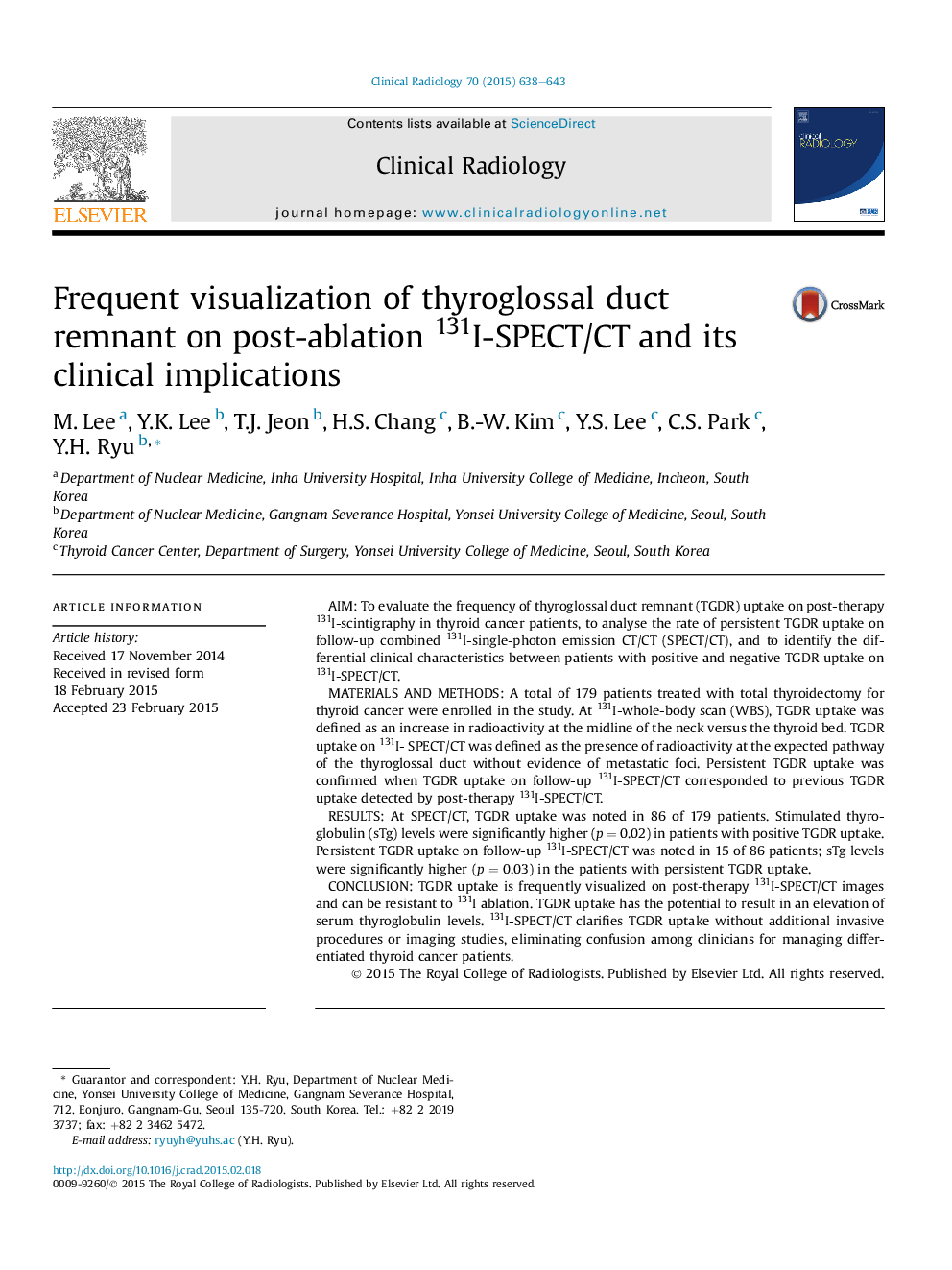| Article ID | Journal | Published Year | Pages | File Type |
|---|---|---|---|---|
| 6190870 | Clinical Radiology | 2015 | 6 Pages |
AimTo evaluate the frequency of thyroglossal duct remnant (TGDR) uptake on post-therapy 131I-scintigraphy in thyroid cancer patients, to analyse the rate of persistent TGDR uptake on follow-up combined 131I-single-photon emission CT/CT (SPECT/CT), and to identify the differential clinical characteristics between patients with positive and negative TGDR uptake on 131I-SPECT/CT.Materials and methodsA total of 179 patients treated with total thyroidectomy for thyroid cancer were enrolled in the study. At 131I-whole-body scan (WBS), TGDR uptake was defined as an increase in radioactivity at the midline of the neck versus the thyroid bed. TGDR uptake on 131I- SPECT/CT was defined as the presence of radioactivity at the expected pathway of the thyroglossal duct without evidence of metastatic foci. Persistent TGDR uptake was confirmed when TGDR uptake on follow-up 131I-SPECT/CT corresponded to previous TGDR uptake detected by post-therapy 131I-SPECT/CT.ResultsAt SPECT/CT, TGDR uptake was noted in 86 of 179 patients. Stimulated thyroglobulin (sTg) levels were significantly higher (p = 0.02) in patients with positive TGDR uptake. Persistent TGDR uptake on follow-up 131I-SPECT/CT was noted in 15 of 86 patients; sTg levels were significantly higher (p = 0.03) in the patients with persistent TGDR uptake.ConclusionTGDR uptake is frequently visualized on post-therapy 131I-SPECT/CT images and can be resistant to 131I ablation. TGDR uptake has the potential to result in an elevation of serum thyroglobulin levels. 131I-SPECT/CT clarifies TGDR uptake without additional invasive procedures or imaging studies, eliminating confusion among clinicians for managing differentiated thyroid cancer patients.
